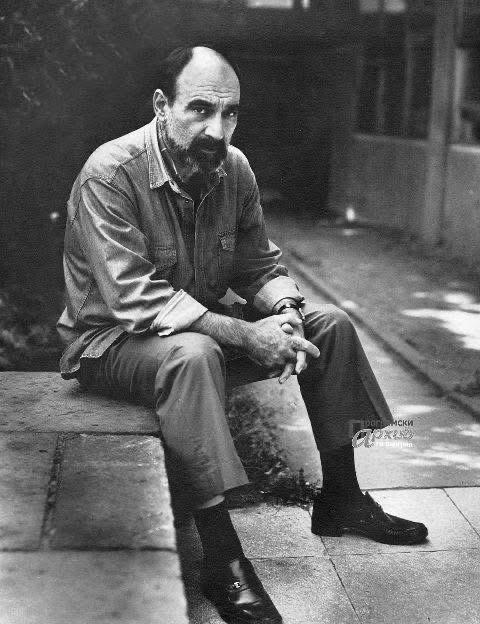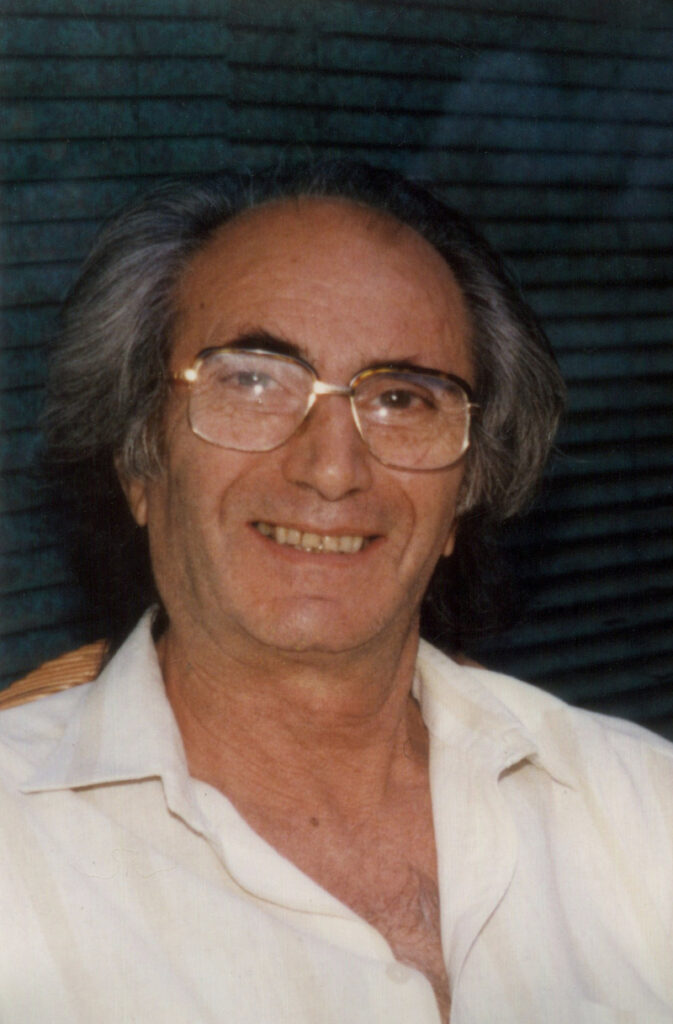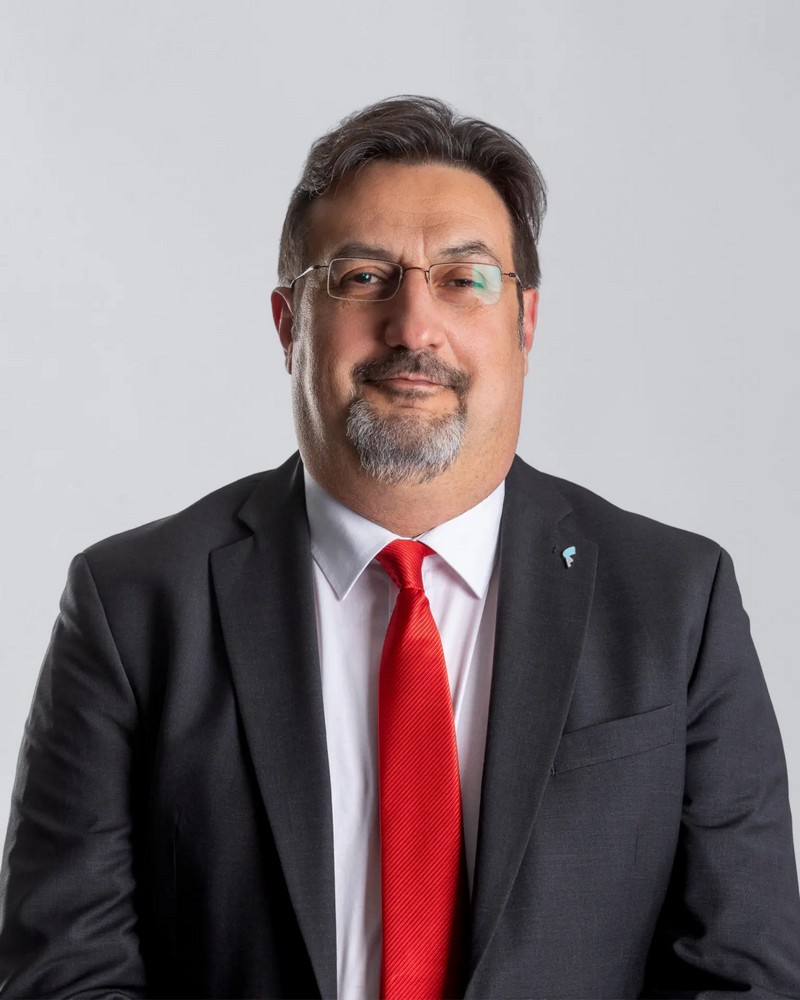From Classical Music and Fine Arts to Ballet – The Enduring Influence of an Armenian Community

ARMENIANS IN SERBIA
by Vladimir Petrović
Armenians in Serbia have left a significant mark in various fields of art, particularly in architecture, music, painting, and applied arts. They often combined Armenian tradition with Serbian cultural heritage in their work. The strong cultural ties between the two peoples were especially evident after the First World War, when a large Armenian colony settled in Belgrade. Among the descendants of this community, four important names stand out.
Vartkes Baronijan

A composer who united classical music, film, and national tradition
Vartkes Baronijan was a prominent composer and music educator who left a profound mark on Serbian and Yugoslav culture. He was born in 1933 in Belgrade, into a family of Armenian refugees who found refuge in Yugoslavia after the great tragedy. The awareness of his origins, as he frequently stated, had a profound impact on his life and creative work.
He began his music education at the “Josip Slavenski” school in Belgrade. He graduated in composition from the Music Academy (now the Faculty of Music) in 1963 under the mentorship of Predrag Milošević. After completing his studies, he worked as a music editor at Radio Television Belgrade and later as a professor at the Faculty of Dramatic Arts, where he taught applied music. His book Music as Applied Art is still regarded as a key work in the field.
Remembered for his iconic film music and the composition Arise, Serbia
His oeuvre includes concertos for orchestras, string quartets, sonatas, as well as music for film and television. Particularly memorable are his music pieces for the movies On the Way to Katanga, The Death of Mrs Minister, Vukovar, My Love, Banjica, and The Pillow of My Grave… His compositions were characterised by a strong sense of atmosphere and dramatic tension, critics noted, which made them highly appreciated by both audiences and film professionals.
A particularly significant work tied to Serbian cultural tradition is his music set to the verses of Dositej Obradović’s poem Arise, Serbia, composed for Sava Mrmak’s film The Pillow of My Grave. This composition became so popular that many considered it a work from Dositej’s own time, and it has become an inseparable part of numerous public events.
Vartkes Baronijan passed away in 1993 in Belgrade. He is remembered as an artist who successfully united classical music, film art, and national tradition, leaving behind an exceptional body of work.
Miodrag Vartabedijan

Graphic artist and painter, creator of “vartagraphy” and guardian of cultural heritage
Miodrag Vartabedijan ranks among the most significant graphic artists and painters of the second half of the 20th century in this region. He was born in 1933 in Mladenovac, into a family of Armenian origin. His ancestors settled in the Balkans after World War I. Armenian heritage had a profound influence on Vartabedijan’s life and artistic work.
He graduated from the Academy of Applied Arts in Belgrade in 1958 and completed his postgraduate studies in 1961. During his professional career, he worked as an educator, teaching graphic design at the Higher Polytechnic School, and also served as a designer in numerous publishing houses and newspapers.
Known for inventing the unique technique of vartagraphy
He is particularly remembered for the technique of vartagraphy, named after him, an original process of transferring the reliefs of stone monuments and architectural details onto paper or canvas using paint and chalk. His works preserve the spirit of the past while remaining deeply rooted in the present moment, as critics noted.
He frequently used motifs from Armenian culture, particularly epitaphs and ornaments, blending them with the cultural traditions of the Balkans.
He was the recipient of numerous awards and honours, most notably the ULUPUDS Lifetime Achievement Award (2000). His name and work are also remembered through retrospective exhibitions, the most notable being last year’s at the Ethnographic Museum in Belgrade. The exhibition announcement stated: “The works of Miodrag Vartabedijan Varta reveal a fusion of influences from all the cultures that left their mark on the territory of the former Yugoslavia, and his oeuvre stands out for its originality, which he drew from his Armenian heritage, the Serbian tradition of roadside tombstones and stećak monuments, and the archaeology of the entire region, innovatively introducing a new technique – vartagraphy – through which he transforms the visual threads of the mythical currents of history into symbols, embedding them into a lyrical and contemplative pictorial expression.”
He served as president of the Armenian Community in Serbia and vice-president of the Serbian-Armenian Society. He was married to the artist Dušanka, and they had two children – Anamarija, a distinguished painter and photographer, and David, a renowned graphic designer. Miodrag Vartabedijan passed away in 2009 in Belgrade.
Ašhen Ataljanc

World-class ballerina and dedicated mentor of young dancers
Ašhen Ataljanc is a distinguished Serbian ballerina, choreographer, and teacher.
She was born in 1971 into a family partly of Armenian origin. Her grandfather, Vramšapuh Ataljanc, was a renowned military doctor, while her father, Gabrijel, worked as a neuropsychiatrist. Speaking about her heritage in a newspaper interview, she said: “The name and surname given to us are no coincidence. A name defines us in life. Although I do not speak Armenian nor have I been to Armenia, I belong to that part of the world. My ancestry is not exclusively Armenian. On my grandmother’s side, her mother was German and her father Hungarian, while on my grandfather’s side, his mother was Ukrainian and his father Armenian – so within my father, as within me, many cultures are interwoven.”
She began her professional career at the age of just 16, becoming the youngest ballet soloist in the history of the National Theatre in Belgrade. She performed major roles in classical ballet, particularly in Swan Lake, Don Quixote, La Bayadère, Giselle…
The youngest ballet soloist in the history of the National Theatre in Belgrade
After her time at the National Theatre in Belgrade, she performed in numerous European theatres, most notably with the Bavarian State Opera in Munich and the Berlin State Opera.
She also excelled in modern ballet, performing with renowned companies such as Aterballetto from Italy and the Bitef Dance Company. She has received numerous awards for her artistic achievements.
She is currently dedicated to educating young dancers through her own dance school, passing on her experience and knowledge to the next generation of ballet artists.
Aris Movsesijan

Dentist, writer and film director turned political leader
Aris Movsesijan is a Serbian dentist, writer, filmmaker and politician of Armenian descent.
He was born in 1966 in Belgrade, into a family whose paternal line traces back to Armenians who came to Serbia in the aftermath of the early-20th-century upheavals. His grandfather left the Ottoman Empire to avoid forced conscription, and the family kept a strong sense of Armenian identity while fully integrating into Serbian society.
Movsesijan graduated from the Faculty of Dental Medicine at the University of Belgrade, where he later contributed scientific papers in the field of periodontology. Alongside his medical career, he developed a wide range of cultural interests. He published the short story collection Likovi i pisci (1995), worked on film projects — as assistant director on Svetsko čudovište (2003) and as screenwriter and director of Aporija (2006), presented at FEST, and remained active as an essayist and blogger.
A Serbian public figure who bridges Armenian heritage, culture and civic activism
He entered politics in 2014, initially joining Nova stranka out of a desire to oppose censorship and personality cults. Within the party, he served as coordinator for cultural policy, vice president of the Main Board, and later as president of the Political Council. In October 2020, he became party president. After the 2022 parliamentary elections, in which Nova did not pass the electoral threshold, he stepped down. In late 2023, he joined the Movement of Free Citizens (Pokret slobodnih građana), where he remains a member of the Presidency today.
Throughout his public life, Movsesijan has advocated for cultural freedom, democratic values and recognition of the Armenian historical experience, including the 1915 genocide. Outside politics, he remains a practising dentist and an active voice in Serbia’s cultural scene.